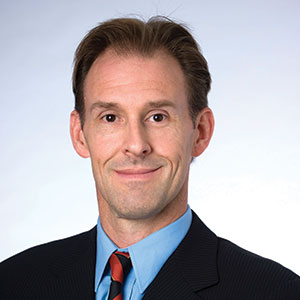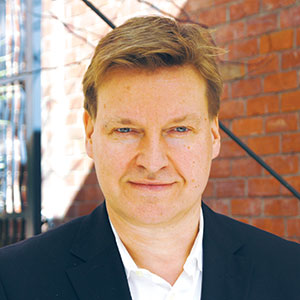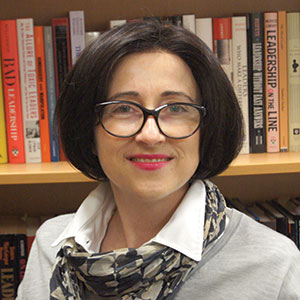Remember Nokia? The world’s largest mobile phone maker in the 1990s sold its handset division to Microsoft two years ago, giving a final nod to the smartphone makers, Apple and Samsung, now dominating the global mobile phone market.
Kodak, maker of film and cameras, as ubiquitous as iPhones in the 1960s, ‘70s and ‘80s, is now a shadow of its former self after emerging from bankruptcy earlier this decade, while Blockbuster Video stores have vanished from suburbia as quickly as movie download companies Netflix and Stan have appeared on our smart TVs.
 These companies failed, according to UniSA Associate Professor in Engineering Innovation, David Cropley, because their leaders failed to recognise new disruptive technology capable of revolutionising or destroying their business. Even worse, they failed to innovate to compete in a new paradigm.
These companies failed, according to UniSA Associate Professor in Engineering Innovation, David Cropley, because their leaders failed to recognise new disruptive technology capable of revolutionising or destroying their business. Even worse, they failed to innovate to compete in a new paradigm.
“The companies that get into trouble ignore the change or, even when they see it, press ahead and do the same thing,’’ Assoc Prof Cropley says.
“If you keep doing the same thing over and over and expect a different result, that is Einstein’s definition of insanity.’’
Based at UniSA’s Defence and Systems Institute, Assoc Prof Cropley has become an unlikely media star, appearing recently in ABC TV’s Redesign My Brain to take advertising guru Todd Sampson through his paces in creative problem solving. It’s an approach which he believes can be taught to even the most cautious CEO or organisation.
According to Assoc Prof Cropley, psychology has a “big five” model of traits which predict an innovative personality – openness, extroversion, agreeableness, conscientiousness and emotional stability – but practising these traits can improve a leader’s creativity and innovation.
“Applying innovation to a company, however, is more complex and all about timing,” he says.
“I think innovation is paradoxical; it’s this idea that not everything is universally good for innovation or that you have to be nimble or flexible.
“Today you have to think divergently (come up with many ideas) but tomorrow think convergently (think critically) and it’s all of those things together. Knowing what to do at the right time is the key to innovation.”
To help companies improve their competitiveness, Assoc Prof Cropley has developed an instrument, now being licensed by the University, to diagnose their capacity for innovation and overcome any roadblocks to it.
The instrument begins with a survey of everyone in the company, giving managers an aggregate view of the organisation’s innovative strengths and weaknesses. Assoc Prof Cropley then consults with managers to work across seven stages and factors of the business to determine what it must do to change.
He hopes to help manufacturers create new products and improve the service delivery and processes for other organisations to take them well into the future; capabilities Australian organisations desperately need to survive and grow in an increasingly knowledge-based economy.
“The driver for innovation and creativity is change and society is changing all the time. There are financial, health and social changes and they drive the need for new solutions and new products,’’ he says.
Old companies can reinvent themselves, Assoc Prof Cropley says, using the example of typewriter firm Smith Corona, a market leader for 100 years which failed to realise the fatal impact of computers and personal printers. The company survives today as a leader in heat-sensitive label makers after an innovator saw potential in the company’s technological expertise in making typewriter ribbons.
 Openness to change is critical in order to be a successful leader, according to UniSA School of Management Head Professor Thomas Maak and Chair in Positive Business Professor Nicola Pless, who are both world-leading innovators in a service-learning program to cultivate innovation now being mimicked throughout the world.
Openness to change is critical in order to be a successful leader, according to UniSA School of Management Head Professor Thomas Maak and Chair in Positive Business Professor Nicola Pless, who are both world-leading innovators in a service-learning program to cultivate innovation now being mimicked throughout the world.
 The team helped design a project with multinational business service firm PWC in 2001 with an outside-the-square idea to nurture future leaders within the organisation.
The team helped design a project with multinational business service firm PWC in 2001 with an outside-the-square idea to nurture future leaders within the organisation.
Called Project Ulysses, the service-learning program sent participants in teams to developing countries for two months to work in cross-sector partnerships with non-government organisations, social entrepreneurs and international organisations to solve a problem, such as improving on HIV/AIDS prevention programs in Africa.
To understand how Ulysses participants learned to innovate, Profs Maak and Pless used 180 of the most compelling “learning stories” in award-winning research which analysed evidence of learning in six areas: responsible mind-set, ethical literacy, cultural intelligence, global mind-set, self-development, and community building.
Taken out of their comfort zone to collaborate with people outside their professional scope, participants came away with a life-changing experience, according to Prof Pless.
“Participants developed a new perspective which helped make sense of the emotions they experienced while on assignment as they resolved difficult problems,” she says.
“What we found is the project developed interpersonal competencies which allow them to work with people from different backgrounds, cultures and sectors and they learned to develop new approaches.
“If you bring that back into the business context, you see they’ve gained competencies that allow them to relate to stakeholders both inside and outside the organisation.”
An analyst of socially responsible enterprise, Prof Pless says the best innovative leaders have a big vision for their companies. For The Body Shop founder Anita Roddick it was fair trade and for United States-based entrepreneur Ray Anderson it was environmental responsibility.
She says corporations that look beyond the balance sheet, have a long-term vision and are open to collaborate with others will ultimately be successful.
She likes to quote from the late Anderson, whose flooring company Interface reinvented itself to become a zero-emissions manufacturer in the late 1980s: “For those who think business only exists to make a profit, I suggest they think again. Business makes a profit to exist. Surely it must exist for some higher, nobler purpose than that.”
Prof Maak says participants from Project Ulysses, who “became indigenous in their thinking” and learned to stop, look and listen before making decisions, have gone on to become successful leaders.
“What we now know is that the vast majority of participants are now in very senior positions. The Ulysses alumni are very vocal and very conscious about responsible leadership,’’ he says.
Prof Maak and Pless’ work is believed to be at the vanguard of leadership research, which has been traditionally focused on leader-down hierarchical structures.
Project Ulysses’ findings relate better to new-economy, internationall focused businesses where leaders have to think in a matrix, working across several sectors and markets with a variety of stakeholders, Prof Maak says.
“The reality is leaders operate in multi-stakeholder environments and they require different abilities to navigate this – Ulysses was the first (project) in which we could look at the qualities required..
“Through this model, we’re developing the next generation of responsible and innovative global leaders.’’
Prof Maak says academics now need to be innovative to keep up with understanding startups and new socially driven businesses which are removed from the traditional leadership set up.
“We still have that cluster of traditional leadership set ups but the vast majority of leadership relationships are quite different these days and academia needs to address this,’’ he says.
Prof Maak hopes to work with Assoc Prof Cropley in the future on a new field of research examining the neuroscience behind what makes an innovative leader.
Find out more at the Business School website.
Connect with Assoc Prof David Cropley: @dhcropley